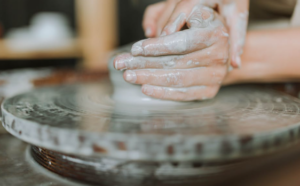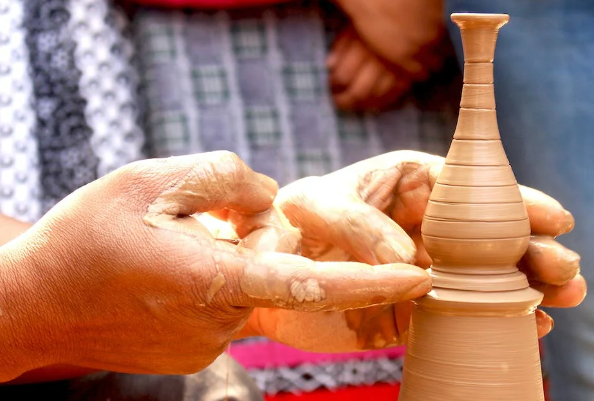Table Of Contents
- 1 Unveiling the World of Realistic Clay Sculpting
- 1.1 Exploring the Essence of Realistic Clay Sculpting
- 1.2 Unlocking the Artistic Potential
- 1.3 Equipping Yourself for the Journey
- 1.4 Embrace the Creative Process
- 1.5 Mastering the Fundamentals of Realistic Clay Sculpting
- 1.6 Observation and Anatomy:
- 1.7 Shaping and Blocking In:
- 1.8 Refine and Detail:
- 1.9 Proportion and Perspective:
- 1.10 Shading and Texturing:
- 1.11 The Art of Armatures:
- 1.12 Exploring Advanced Techniques and Pushing Boundaries
- 1.13 Creating Complex Forms:
- 1.14 Capturing Emotion and Expression:
- 1.15 Personalizing Your Style:
- 1.16 Refining Your Skills and Sharing Your Art
- 1.17 Seek Feedback and Guidance:
- 1.18 Document Your Progress:
- 1.19 Share Your Passion:
- 1.20 Conclusion:
- 1.21 FAQs:
- 1.22 What are some beginner-friendly exercises for realistic clay sculpting?
- 1.23 How can I improve my observation skills for realistic clay sculpting?
- 1.24 What are some common mistakes that beginners make in realistic clay sculpting?
- 1.25 Where can I find inspiration for my realistic clay sculptures?
- 1.26 How can I display my realistic clay sculptures?
Unveiling the World of Realistic Clay Sculpting
Step into the captivating realm of realistic clay sculpting, where imagination and technical prowess converge to bring life-like forms to life. This art form demands both artistic sensitivity and meticulous craftsmanship, allowing you to capture the essence of human figures, animals, and other subjects in a three-dimensional medium.
Exploring the Essence of Realistic Clay Sculpting
Realistic clay sculpting defies the limitations of mere representation, striving to capture the essence of its subjects, conveying not only their physical form but also their emotions, gestures, and inner qualities. It’s an art of observation, understanding, and translation, where the sculptor’s hands become a conduit for interpreting the complexities of the human form, the vitality of animals, or the intricate details of inanimate objects.

Unlocking the Artistic Potential
Realistic clay sculpting offers a unique vehicle for self-expression and personal growth. As you delve into the intricacies of anatomy, proportion, and shading, you’ll refine your observation skills, enhance your spatial awareness, and develop a deeper understanding of the human form.
Equipping Yourself for the Journey
Before embarking on your realistic clay sculpting journey, gather the essential tools and materials:
-
High-quality clay: Opt for a clay that is suitable for fine modeling and high-temperature firing.
-
** sculpting tools:** A range of sculpting tools, including rib tools, loop tools, and carving tools, will provide the versatility to create intricate details.
-
Working surface: A smooth, non-porous surface, such as a plaster-covered board or a glass tabletop, will prevent the clay from sticking.
-
Water sprayer: Keep a spray bottle filled with water handy to keep the clay moist and prevent it from drying out.
-
Reference materials: Use reference photographs, anatomical charts, and real-life models to capture the essence of your subjects.
Embrace the Creative Process
As you embark on your realistic clay sculpting journey, let your creativity guide you. Experiment with different techniques, explore new approaches, and don’t be afraid to push the boundaries of what you believe is possible. With dedication and passion, you’ll unlock the limitless potential of this art form.
Join me in the next session as we delve into the fundamental techniques that will transform you into a realistic clay sculpting maestro.

Mastering the Fundamentals of Realistic Clay Sculpting
The foundation of realistic clay sculpting lies in mastering the fundamental techniques that allow you to accurately capture the form, proportion, and details of your subjects. These techniques serve as the building blocks for creating lifelike sculptures that captivate the viewer.
Observation and Anatomy:
The first step towards realistic clay sculpting is meticulous observation. Study your subject closely, paying attention to the details of their form, proportion, and movement. Familiarize yourself with human anatomy, animal anatomy, or the intricate details of your chosen subject.
Shaping and Blocking In:
Once you have a clear understanding of your subject, begin by shaping the basic form of your sculpture using coiling, pinching, and slabbing techniques. These techniques allow you to create a foundation that accurately captures the overall proportions and shape of your subject.
Refine and Detail:
With the basic form established, refine the details using a variety of sculpting tools, such as rib tools, loop tools, and carving tools. These tools enable you to sculpt subtle variations in form, create intricate textures, and define the finer details of your subject.
Proportion and Perspective:
Proper proportion and perspective are crucial for creating a realistic sculpture. Use reference materials to ensure the proportions of your subject are accurate and the perspective of your sculpture is consistent.
Shading and Texturing:
Shading and texturing play a vital role in bringing life to your sculpture. Vary the application of slip to create subtle shadows and highlights, mimicking the effects of light and shadow on your subject. Use a variety of sculpting tools to create textures that enhance the realism of your work.
The Art of Armatures:
For larger or more complex sculptures, armatures can provide the necessary support and structure. Armatures are internal structures, often made of wire or metal rods, that provide the rigidity and form that allows the clay to hold its shape.
Exploring Advanced Techniques and Pushing Boundaries
As you progress in your realistic clay sculpting journey, you’ll encounter opportunities to expand your repertoire and push the boundaries of what’s possible. These advanced techniques enable you to create even more lifelike and expressive sculptures.
Creating Complex Forms:
With practice and skill, you can tackle more complex forms, such as folded fabric, intricate folds of skin, or the intricacies of animal fur. Experiment with different techniques, such as the use of tools, textures, and slip to create realistic details.
Capturing Emotion and Expression:
Realistic clay sculpting extends beyond mere physical representation; it also captures the emotions and expressions of your subjects. Observe closely the subtle nuances of facial expressions, body language, and gestures, and translate these into your sculpture.
Personalizing Your Style:
As you gain mastery, develop your own unique style and approach. Explore different techniques, combine traditional methods with innovative approaches, and incorporate your personal aesthetic into your work.
Refining Your Skills and Sharing Your Art
Your realistic clay sculpting journey is a continuous process of refinement and growth. As you practice and refine your skills, you’ll gain confidence and a deeper understanding of the art form.
Seek Feedback and Guidance:
Engage with other artists, attend workshops, and seek constructive criticism from experienced sculptors. Share your work with art communities and online platforms to receive feedback and connect with fellow artists.
Document Your Progress:
Keep a sketchbook or digital portfolio to document your progress and track your artistic growth. This will allow you to reflect on your achievements, identify areas for improvement, and celebrate your milestones.
Share your passion for realistic clay sculpting with others. Teach workshops, give demonstrations, or participate in art exhibitions. Inspire others to explore the joy of creating lifelike sculptures.
Remember, realistic clay sculpting is a journey of continuous learning, experimentation, and self-expression. Embrace the challenges, celebrate the successes, and let your imagination guide you as you create masterpieces that capture the beauty and essence of your subjects.
Conclusion:
Realistic clay sculpting is an art form that demands both meticulous craftsmanship and artistic sensitivity. It’s a journey of continuous learning, experimentation, and self-expression, allowing you to capture the essence of your subjects in a captivating three-dimensional medium. Embrace the challenges, celebrate the successes, and let your imagination guide you as you create masterpieces that will inspire and amaze.
FAQs:
What are some beginner-friendly exercises for realistic clay sculpting?
Start with simple forms, such as spheres, cubes, and cylinders. Practice shaping and refining these forms using coiling, pinching, and slabbing techniques. As you gain confidence, progress to more complex shapes and textures.
How can I improve my observation skills for realistic clay sculpting?
Practice drawing and sketching your subjects from various angles. Pay attention to the details of their form, proportion, and movement. Use reference materials to enhance your understanding of anatomy, perspective, and lighting.
What are some common mistakes that beginners make in realistic clay sculpting?
Overworking the clay can lead to cracks and warping. Use tools sparingly and work with damp hands to maintain the clay’s moisture.
Not using enough slip when joining pieces of clay can result in weak and unstable connections. Use a thin layer of slip to ensure a strong bond.
Insufficiently drying the clay can cause warping or cracking during firing. Follow proper drying techniques to ensure the clay is completely dry before firing.
Uneven firing can lead to uneven shrinkage and distortion. Use a reliable kiln and ensure the firing cycle is consistent.
Remember, mistakes are inevitable and can be valuable learning opportunities. Embrace them and use them to refine your technique.
Where can I find inspiration for my realistic clay sculptures?
Observe the world around you, paying attention to the details of people, animals, and objects. Visit art galleries, museums, and online resources to view the works of renowned sculptors.
Challenge yourself to capture the essence of your subjects, not just their physical appearance but also their emotions, gestures, and inner qualities.
How can I display my realistic clay sculptures?
Once your sculptures are fired and cooled, consider displaying them in a gallery, museum, or online platform. Share your work with fellow artists, art enthusiasts, and the wider community.
